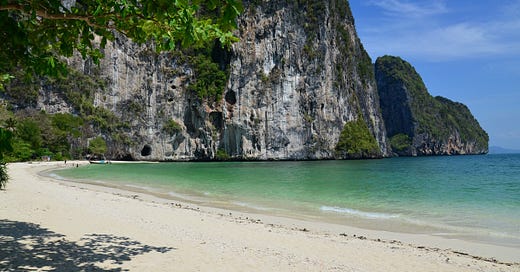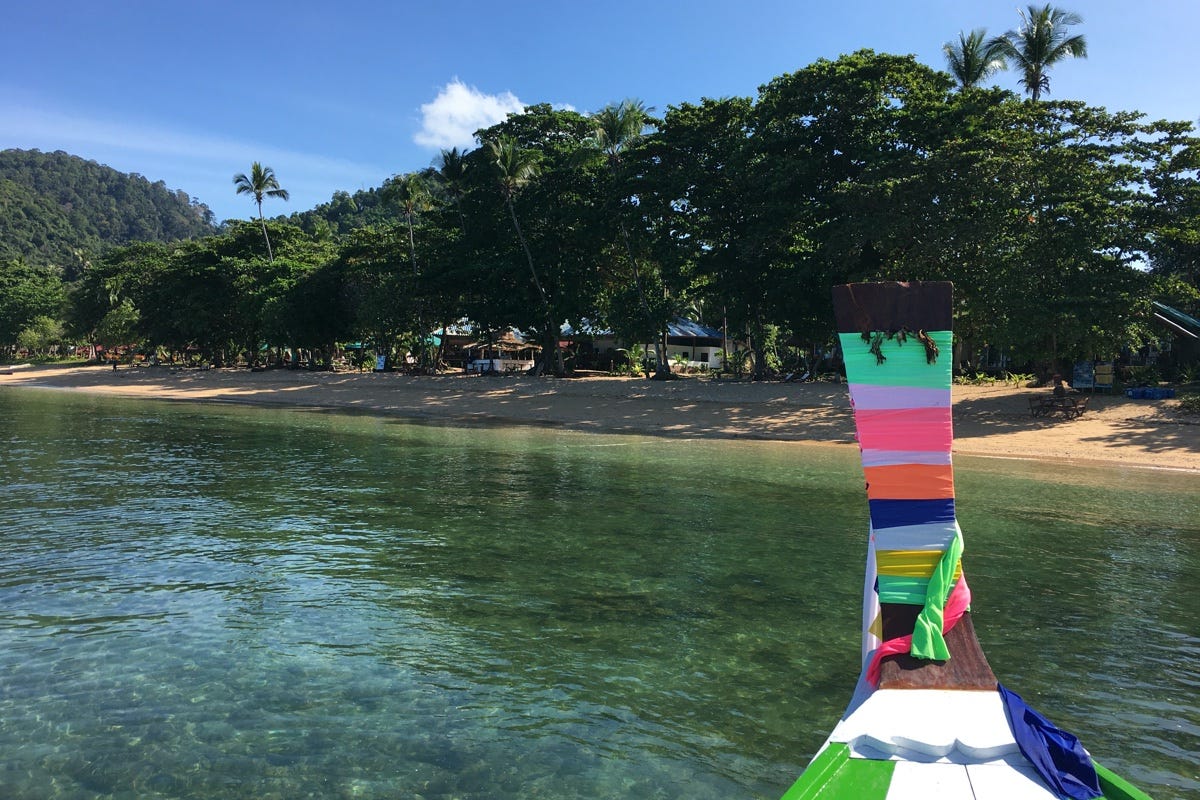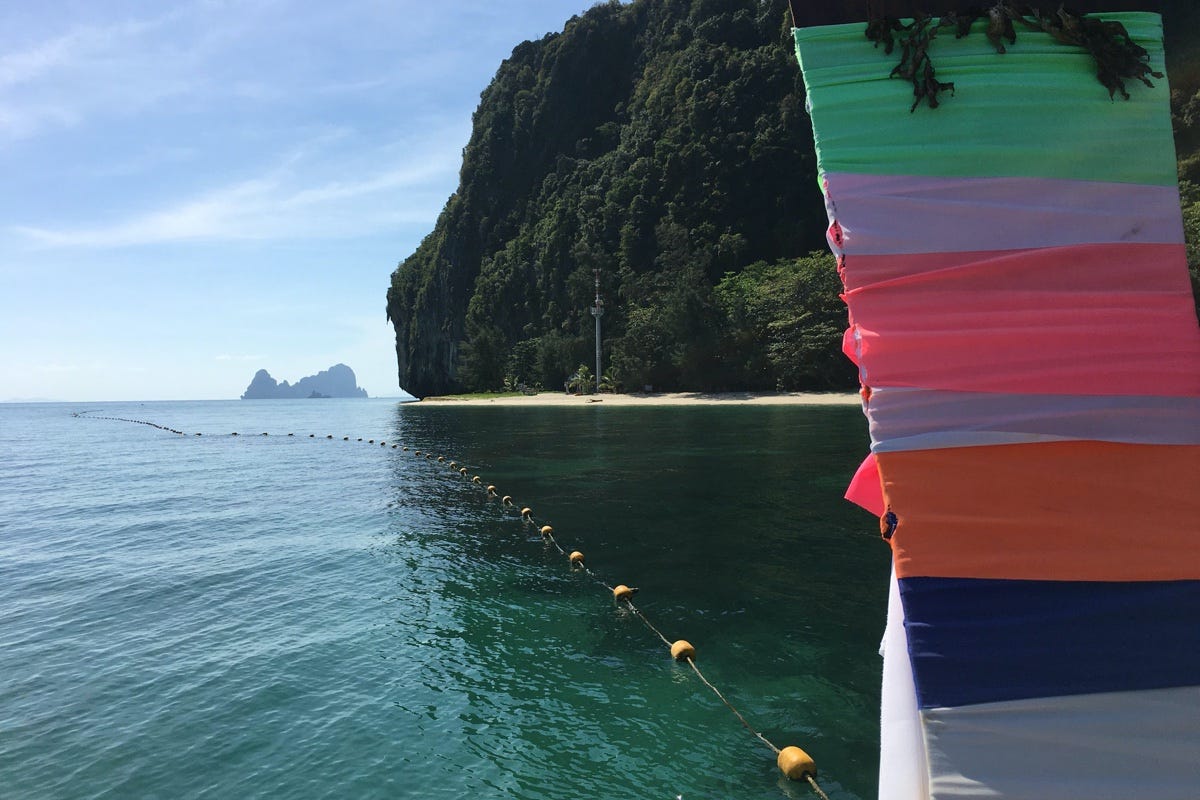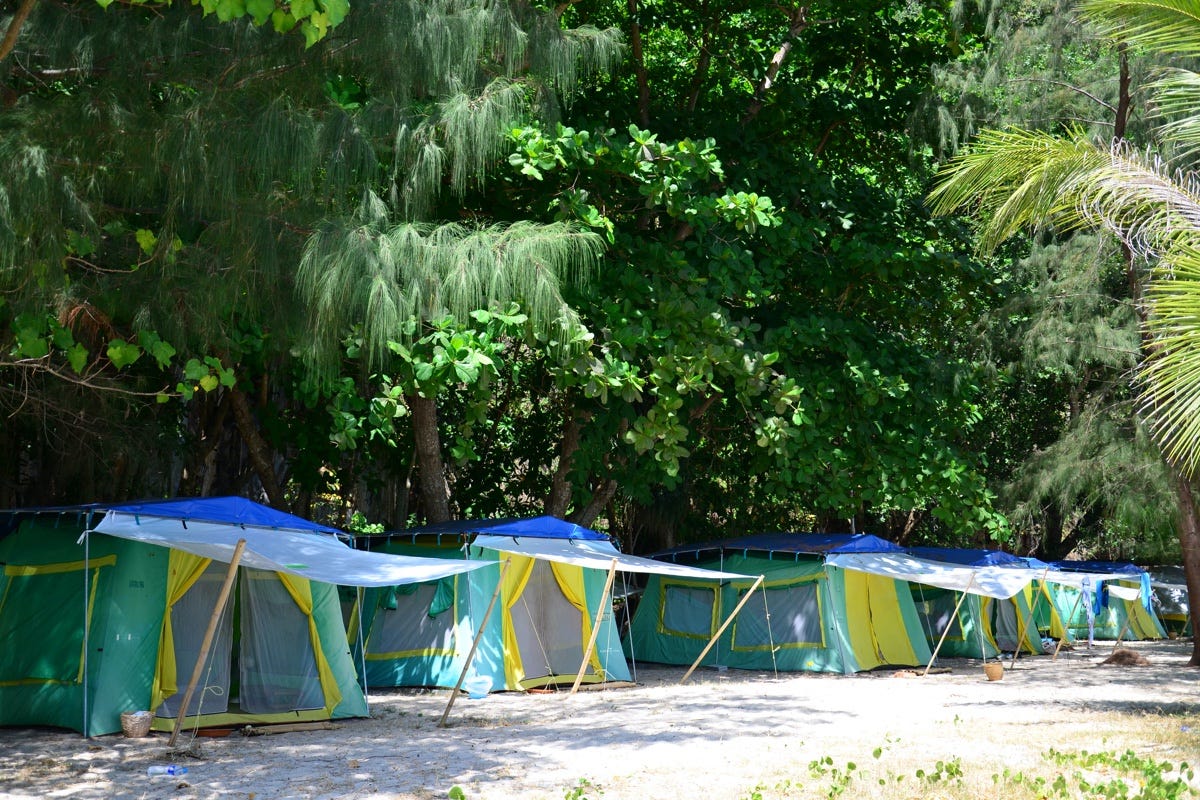Don’t fret, the end is within sight on this multi–part Thai island sojourn—just a few to go! Today we leave Ko Libong for the longtail trip south to Ko Sukorn. As I’ve written about Sukorn previously, today I’m going to write about where we broke the journey at—Ko Lao Liang.
Please do watch to the end to see cheeky Will get his just desserts.
A part of Mu Ko Petra National Park, this stopover is directly west of Ko Sukorn, and is two islands rather than one. To the south lies Ko Lao Liang Nong (Little Brother Island) and to the north, Ko Lao Liang Phi (Big Brother Island). Both are karst islands, with cliffs plunging into the sea to the west and fringed by white sand beaches on the east. Separated by a channel that takes 20 minutes to kayak across, both beaches face onto coral gardens.
As with Ko Petra further to the south, the islands are swiftlet nest concessions. The bird nests are a key ingredient for a Chinese delicacy and thanks to the value of the trade, it keeps development at bay. Aside from a rustic national park building, the few shacks on each island are for the harvesters. Neither island is permanently inhabited.
Bye bye Ko Libong. Photo: Stuart McDonald.
It wasn’t always this way though. For a spell a few years ago, a “glamping” resort ran here from October to April. Built around the ethos of leaving only footprints, the accommodation was all tents. Guests would camp, backs to the cliffs, in the foreground white sand. They’d wake daily, look across the sand and over the waters to the sun rising over the Thai mainland. At around 6,000 baht for three nights all inclusive, the experience was not cheap, but it proved to be very popular.
It wasn’t only camping—there was rock–climbing on bolted routes, with rope ladders leading up from the water. There was yoga, kayaking and swinging in the hammock. With twenty tents and daily boat services to the mainland, it was a lot for islands this small to absorb.
Hello beautiful. Photo: Stuart McDonald.
And that was just those who were camping. Off the back of the camping, the islands surfaced on bucket lists. Flogged by travel agents in Trang, day trips were popular. Yachts visited from Phuket, along with longtails (like ours) from Ko Libong, Ko Muk and Ko Kradan. For those with more money than time, speedboats worked.
One longtail became two, became three, became five. The island hopper service stopped offshore for those heading to Ko Sukorn. Larger tour boats came from the mainland. More anchors. More anchor drag. Boats would run up onto the beach—easier for lugging supplies and helpful for tourists who didn’t want to get their feet wet.
The reef looks better from above the surface. Photo: Stuart McDonald.
Thankfully it never reached the proportions of Ko Phi Phi Leh’s Maya Bay. According to a resort owner I talked to on Ko Sukorn though, leaving only footprints got hard.
“There were two toilets—one for men, one for women—for the campers, but everyone used. In December and January, so many people, so many boats—Oh My Buddha!”
Eventually, someone had enough and the camping was decamped. Day–trippers were still allowed, but without the anchor of the camping, visitors dropped off.
Back when camping was a thing. Photo: David Luekens.
While the beach and jungle were easy enough to clean up, for the reef, the damage was done. The same Sukorn hotelier unequivocally blamed boats for the damage—particularly speedboats from Ko Lanta and Phuket. Their propellers fall deeper than that of a longtail and the damage is irreparable. They said by the time the reef was protected by a ring of buoys, it was too late—and many boats would just motor over it anyway. In the common tradition of blaming anyone but locals, they said:
“These people, they are not from here. They are from Krabi, Phuket. They don’t care. The reef is dead now so they go to Ko Rok instead.”
We arrive on our longtail from Ko Libong in mid morning. As we approach from the north, we can’t see the beach till the last moment, and the reveal is breathtaking. Charcoal and white cliffs with tufts of greenery plunge into the sea. The waters, calm as a mirror, really are turquoise.
Even when there was a mooring line, many ignored it. Photo: David Luekens.
The longtail ties up to a buoy and waves us in to snorkel to the beach. He’s chuffed as we’re here early enough to dodge the national park fee. We dive into the warm waters and swim the thirty metres or so to the beach. There is not another soul here.
The reef is in banged up shape. There are plenty of small, bright coloured fish, but there is smashed coral everywhere. Compared to the soft corals, anemones and fans we saw in the waters of Ko Rok, this is bleak. At least, it is now roped off. Better late than never and all that.
Today in bloody awful. Photo: David Luekens.
Up on the sand, we walk along the beach. It is as picture perfect as it looks. Squeaky sand, a few birds, a bit of a breeze, and that is about it. We reach the end and go to turn back. As we turn I see a catamaran pulling in to the southern island. I feel like we’re intruding onto their island paradise—or them onto ours.
Another swim back out to our longtail. We float on our backs, peering at the cliffs above us. It is pretty special. In another hour we’ll be on Ko Sukorn.



















Share this post